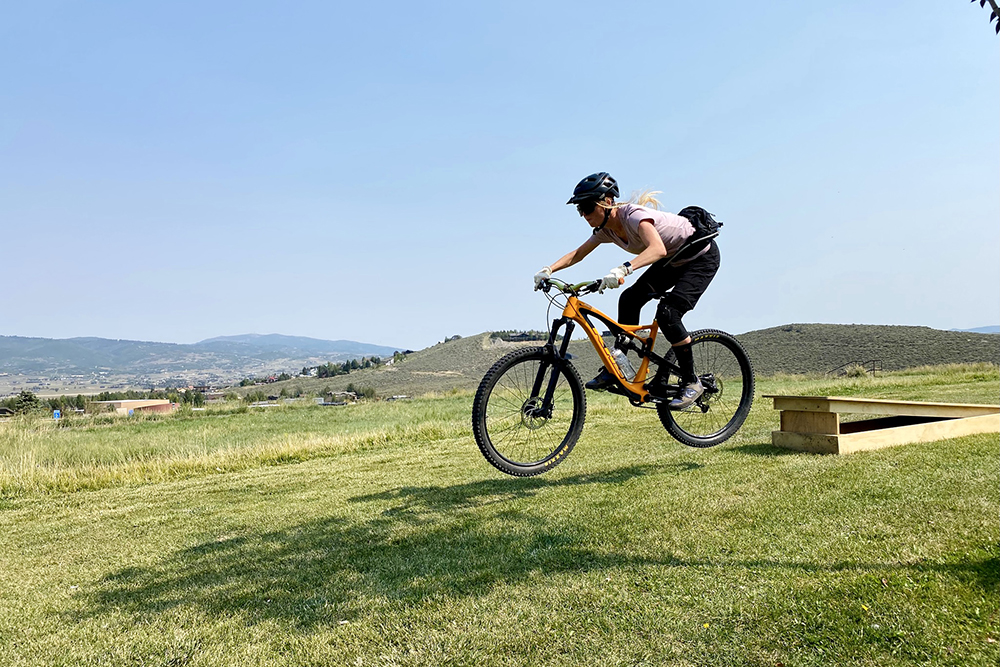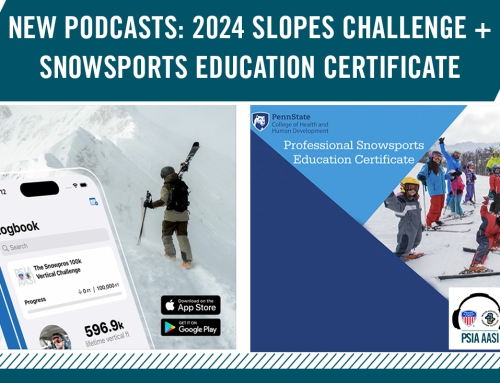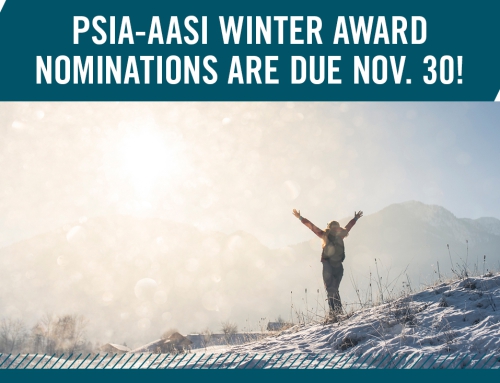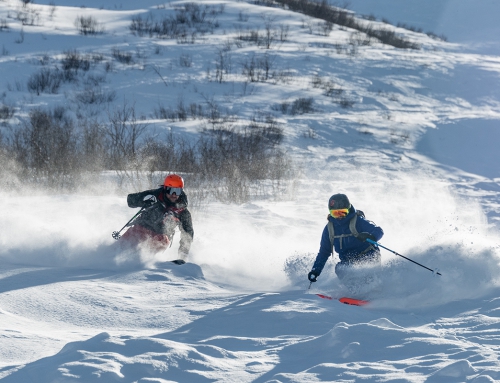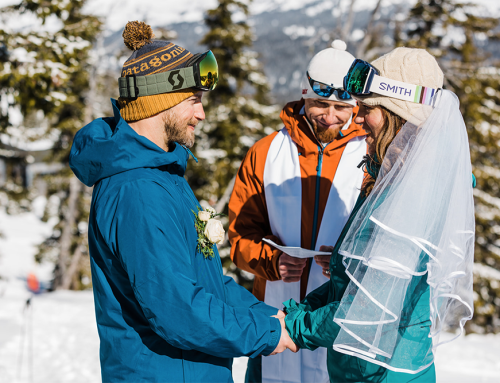32 Degrees: Pedals Accelerate the Power of Becoming a Beginner
This article, by Milan Norling, appears in the Spring 2022 Issue of 32 Degrees. Milan, a PSIA-AASI member, is a ski and mountain bike enthusiast based out of Salt Lake City, Utah.
To become a skillful instructor, you gather insight into how great teachers teach. In the process, don’t overlook the power of diving into how students learn – by becoming a student yourself.
I learned this the best possible way when I took part last summer in my division’s Mountain Biking Skills Clinic in Park City, Utah, taught by Park City alpine instructor Kristen Lane and Shelly Beck, an EMT and assistant professor at the University of Utah. Together, the two applied their diverse teaching backgrounds to compile a specific sequence of fun and informative drills that helped our group take full advantage of the terrain that Trailside Bike Park has to offer.
As a lifetime skier, I have no fear when clicking into my skis and facing a new mountain. However, as a new mountain biker, each time I mount my big, orange bike, I face the looming fear of being a beginner. I’ve participated in some exceptional, on-snow PSIA ski clinics, but when I chose to pick up a few education credits on my bike I experienced a new feeling of anxiousness. What I found, once the anxiousness faded and the clinic was over, was the profound learning that comes from group-dynamics, cross-sport education, and using body movement as a catalyst for change.
Instant Group Comradery
What struck me immediately about this clinic was the vast range of age, backgrounds, and abilities of the people who’d gathered that warm summer morning to spend time improving their biking skills. Our common ground was skiing, which was, in that moment, irrelevant beyond the social connections it provided. Kristen and Shelly carefully divided us into two groups, with an eye toward making sure each participant could each gain as much as possible from the experience.
Since this was my first year on my bike, I was thrilled to join a few others who were also new to mountain biking. Kristen dove right into drills, asking us to navigate a few maneuvers and assessing our ability as we each got warmed up. We spent the first few hours circling cones and hopping about in the parking lot.
Just as snowports instructors learn not to rush into more difficult terrain, this time spent on pavement might have been the most influential in my mind; I carefully observed how Kristen managed the group dynamics. She tactfully highlighted some participant’s skills to teach others, while making each biker feel seen and acknowledged. I made mental note of her ability to create comradery in the group early on and inspire us to learn from one another.
Ah, To Be a Beginner Again
I have to admit, I was feeling humbled by my bike. I’ve been skiing since I could walk and rarely consider the difficulty of the terrain the terrain I ski or the process of getting there. What became clear to me as I navigated the process of purchasing a bike, gathering gear, choosing trails, and gaining confidence was that I was entering a zone I’d long lost sight of, being a beginner. Suddenly, I understood the fear and awkwardness that new students experience when they put on their gear, ride the lift, choose where to ski, and eventually learn to conquer the slopes.
I took stock of the fact that, as an instructor, I’m not just there to teach people to ski, but to guide them through the intimidating process of getting to the top of the mountain and skiing down. Besides helping me refine my physical skills on a bike, the Mountain Biking Skills Clinic helped me navigate the in-between moments and gain an understanding of how to be a mountain biker.
The Magic of Controlling Movement
Kristen repeatedly emphasized the idea that simply moving one’s body is a catalyst for change. There is plenty to be learned by observing, but we will never master a skill until we try it for ourselves. This concept became tangible as my fellow participants and I cranked our pedals and attempted various drills. The discussion we had between drills was only relevant once we tried out new movements on our bikes.
When we transitioned from the parking lot to the trail system, suddenly the blood pumping through our veins and sweat on our faces made way for accomplishing new interactions with our bikes. In teaching a sport – any sport – there are times when talking is essential, but nothing is as powerful as moving the body and stretching the bounds of our minds through physical exertion.
By the end of this clinic, I was able to adjust my body weight to corner more efficiently, strengthen my core to stay composed in the air, adjust my pedals to balance my weight, and make other palpable improvements in my biking ability – all great takeaways that have enhanced every mountain bike ride I’ve taken since the clinic.
Embrace Transitional Experiences
However, the most important thing I left with was a new understanding of how leaving your comfort zone, moving your body, and learning from those around you improves your ability to teach. I’ve thought many times about what I learned from the coaches and fellow riders in my group. Namely, the value of assessing the group dynamics and managing students so that each of their strengths is brought to the table to inspire others.
Our students are assets to the group, and when paired with body movement and a collective sense of leaving the comfort zone, we have a recipe for transitional breakthroughs. If you’re looking to become a better snowsports instructor, I can’t suggest anything better than embarking on a sport that is completely new and embracing the beginner experience.

